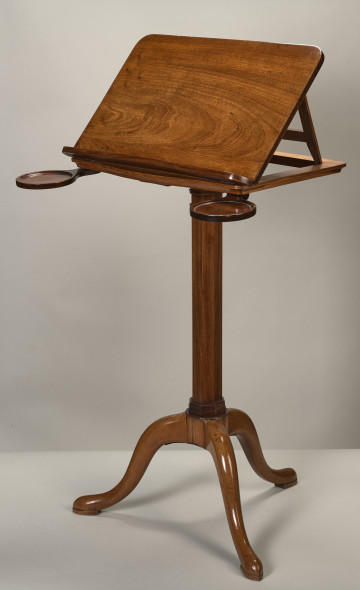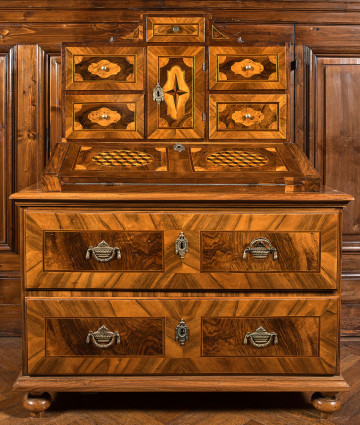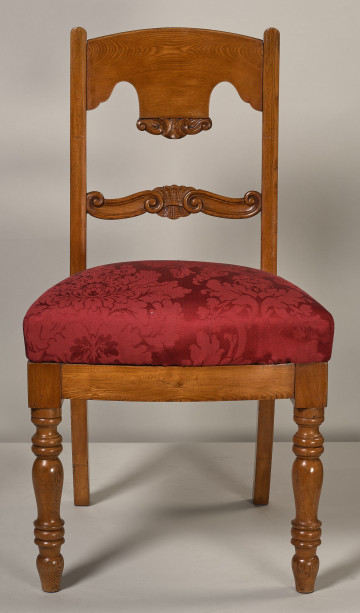
Wooden desktop
18th-19th century
Castle Museum in Łańcut
Part of the collection: Furniture and interior furnishings
Console Table with Setting [Table - Console with Shelves] The presented console table with shelves is one of four identical pieces of furniture, forming a set together with S.520MŁ; S.542MŁ and S.559MŁ. They supplement a set of six semi-circular consoles S.3705MŁ; S.4211MŁ; S.4213MŁ; S.4205MŁ; S.4507MŁ; S.4209MŁ. Similarity of materials and details testify to the common origin of the set of furniture, most probably made at individual request and intended for exhibition purposes. The Latin term “consol”, translated as “consolation”, found its way to multiple European languages. In France, the term “console” denoting a support was introduced at the end of the 17th century to describe wall supports, pedestals and tables. Consoles performed a decorative function, were used to display sculptures, clocks, vases and similar items used to embellish the representative interiors. They were grouped symmetrically between windows or doors and attached to the wall to ensure greater stability. The back of the console, adjoining the wall, usually remained unprocessed, as opposed to the sides that were in view. The consoles, popularised throughout the 18th century, adopted shapes in line with the current fashion and characteristic stylistic forms and details were used to decorate them. The described console has the form of a rectangular table with a four-storey wall shelf ˗ a setting. The console rests with four legs on a narrow, frontally open base ˗ skid type. The polished tops and the base were veneered with a layer of mahogany. A definite highlight in the appearance of the piece of furniture is the woodcarving on the legs with the assembly joint and openwork sides of the setting shelves, narrower at the top. The motive of the lyre in the supports of the shelves and acanthus leaves provide the piece of furniture with lightness of late Classicism. However, the transparent and simple form is typical for the Biedermeier style, dominant in the Central Europe from the second to the fifth decade of the 19th century. Teresa Bagińska-Żurawska https://orcid.org/0000-0002-9243-3967
Author / creator
Dimensions
height: 256 cm, width: 176 cm
Object type
Furniture and interior fittings
Technique
French polish coating
Material
veneer, pine wood
Creation time / dating
Owner
Castle Museum in Łańcut
Identification number
Location / status

18th-19th century
Castle Museum in Łańcut

18th century
Castle Museum in Łańcut

19th (?) century
Castle Museum in Łańcut
DISCOVER this TOPIC
Museum of King Jan III's Palace at Wilanów
DISCOVER this PATH
Educational path